The Howe Pony Truss bridge over Moose Creek New Hampshire is an interesting short-span bridge offering many modeling opportunities
In 1891-93, the Concord & Montreal Railroad built a 30-mile, single-track branch line from its main line at Whitefield, New Hampshire to Berlin, where lumber and paper industries were booming. The line passed through the towns of Jefferson, Randolph, and Gorham, along the northern edge of the Presidential Range. Shortly after the line’s completion, the Boston & Maine Railroad leased the branch for 91 years.[1]
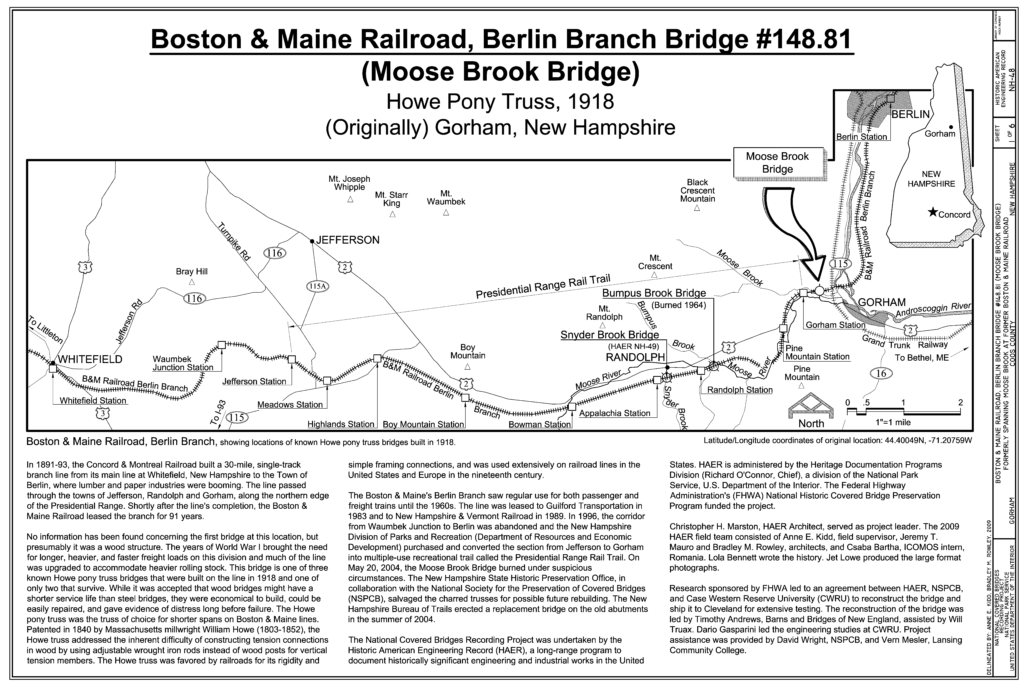
No information has been found concerning the first bridge at Moose Brook, but presumably it was a wood structure. The years of WWI brought the need for longer, heavier, and faster freight loads on this division and much of the line was upgraded to accommodate heavier rolling stock. The line saw use for both passenger and freight trains until the 1960s.
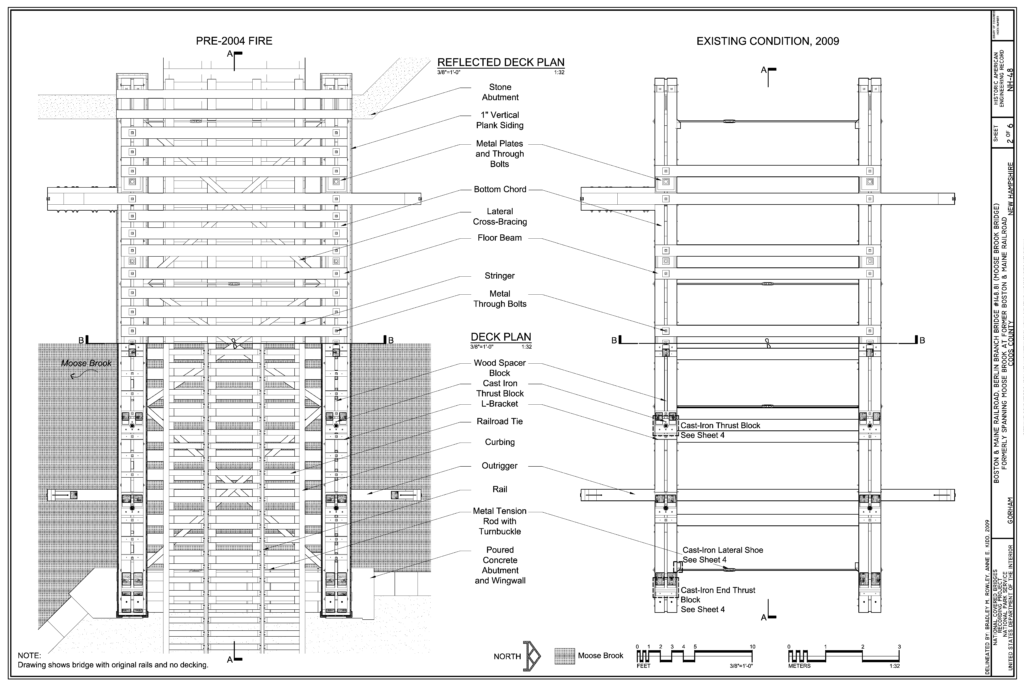
This bridge is one of three known Howe pony truss bridges that were built on the line in 1918 and one of only two that survive. While it was accepted that wood bridges might have a shorter service life that steel bridges, they were economical to build, could be easily repaired, and gave evidence of distress long before failure.
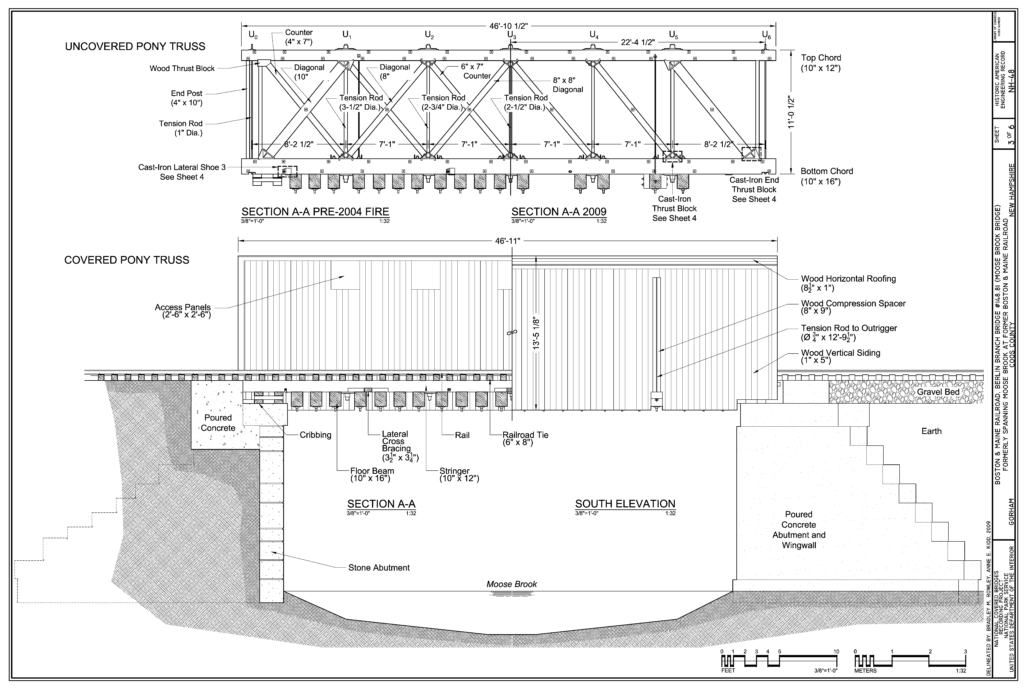
The Howe pony truss was the truss of choice for shorter spans on Boston & Maine lines. Patented in 1840 by Massachusetts millwright William Howe, the Howe truss addressed the inherent difficulty on constructing tension connections in wood by using adjustable wrought iron rods instead of wood posts for vertical tension members. The Howe truss was favored by railroads for its rigidity and simple framing connections, and was used extensively on railroad lines in the United States and Europe in the nineteenth century.
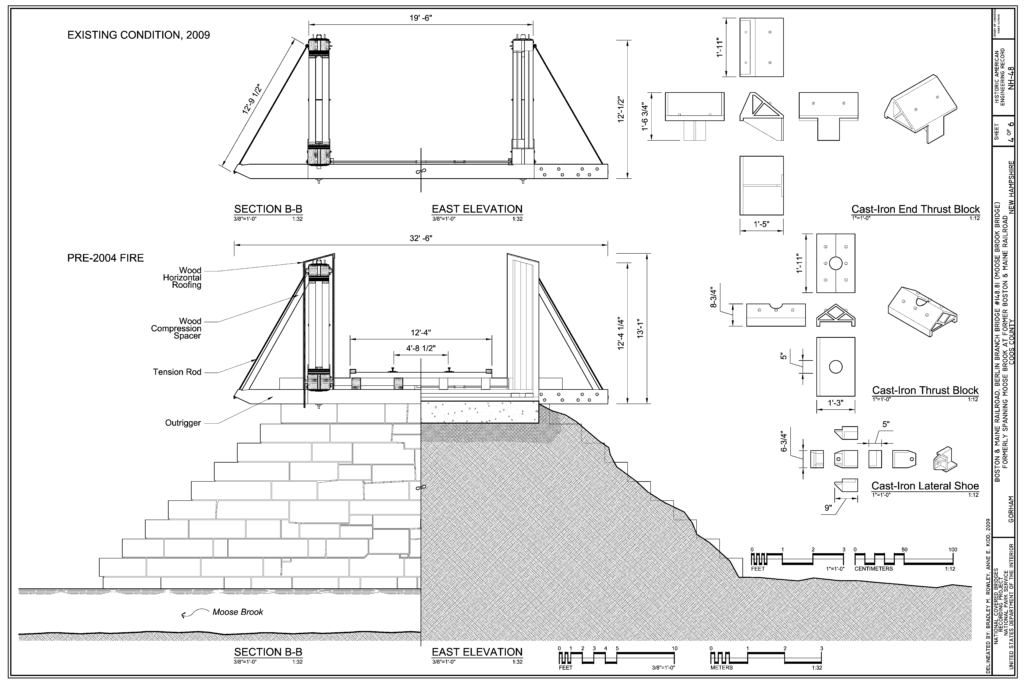
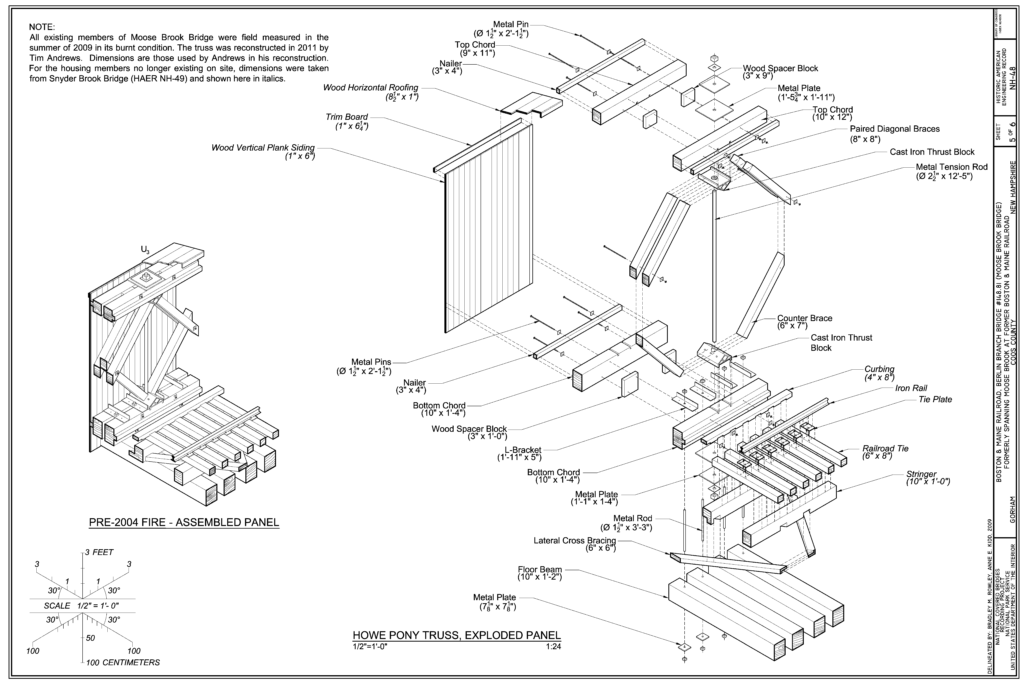

[1] The Moose Brook bridge is part of National Covered Bridges Recording Project. There is an agreement between Historic American Engineering Record, National Society for the Preservation of Covered Bridges, and Case Western Reserve University to test and reconstruct the bridge. It was shipped to Cleveland for extensive testing. The reconstruction of the bridge was led by Timothy Andrews, Barns and Bridges of New England, assisted by Will Truax. Dario Gasparini led the engineering studies at Case Western Reserve University. Project assistance was provided by David Wright and Vern Mesler. The measured drawings were delineated by Anne E. Kidd and Bradley M. Rowley, 2009